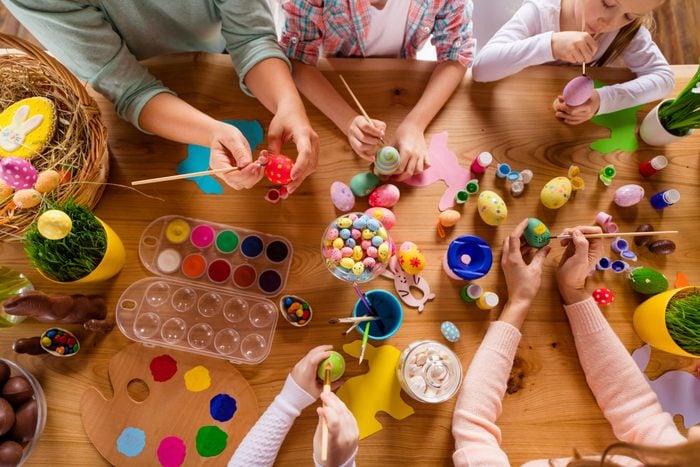
What are Easter traditions?
Eggs (dyed in Easter colors ) and Easter baskets and … a giant rabbit that sneaks into people’s homes? The spring holiday may be beloved by children and grown-ups alike, but many aren’t sure what Easter is really about, how the Easter bunny origin relates to the religious holiday or why we celebrate with certain Easter traditions.
( Print these Easter bingo cards for a fun time with the fam.)
It’s best known as a Christian holiday to celebrate the resurrection of Jesus Christ, but much of our modern celebration has origins even earlier than Christianity. Indeed, Easter is also hugely popular in nonreligious circles. As for when Easter is, well, you can bet it’s on a Sunday. In 2023, it falls on April 9.
What does a family do for Easter?
Easter traditions—like dyeing eggs, giving baskets, handing out your favorite Easter candy and eating a decadent feast—are great ways to bring loved ones together and celebrate the newness of spring. How your family celebrates will depend on whether you’re religious; if you are, you may go to church or otherwise recognize the holiday’s Christian origins.
Read on to learn all about these traditions, where they come from and unique ways to celebrate Easter this year—like creating adult Easter baskets and Easter basket ideas for teens, or downloading free printable Easter cards and writing Easter wishes on them for all your loved ones.
Get Reader’s Digest’s Read Up newsletter for holiday inspiration, humor, cleaning, travel, tech and fun facts all week long.
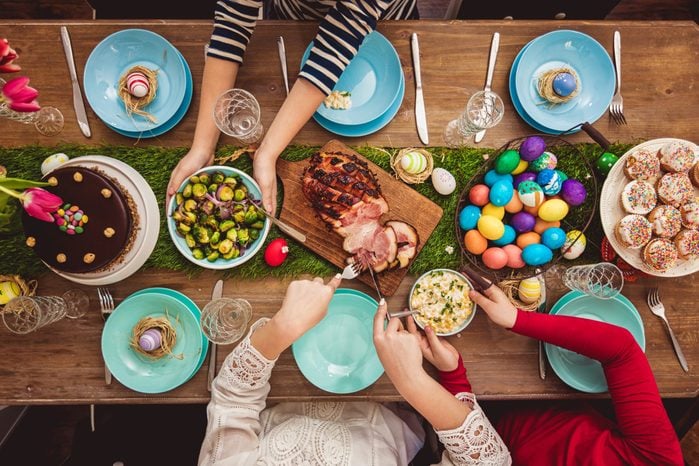
Celebrating Easter Sunday
The traditional day to celebrate Easter is Sunday. If you have to check your calendar every year, there’s a good reason: Easter is a movable feast, its date changing based on a few variables. In the year 325, the council of Nicaea determined that Easter would occur on the first Sunday after the first full moon following the spring equinox—unless that happened to interfere with Passover, in which case the holiday would be the Sunday after that. Yep, it’s confusing.
In short, Easter can occur anytime between March 22 and April 25. Christians celebrate by going to church, then eating a big dinner with loved ones. Most celebrations also include candy and fun Easter games for kids.
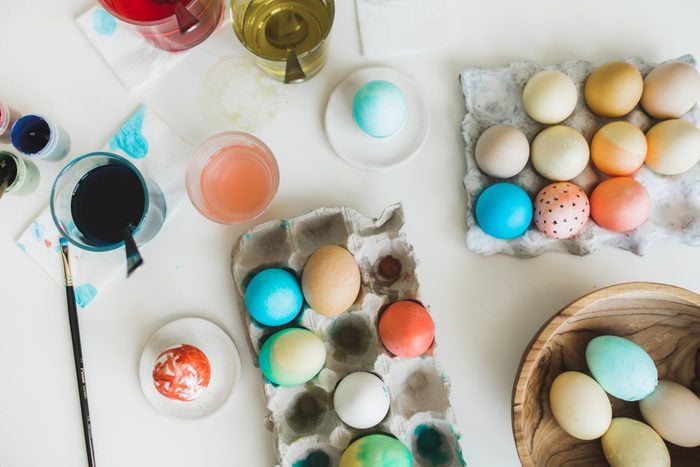
Coloring Easter eggs
The star of Easter is the egg—painted or dyed, hard-boiled or blown empty. Legends abound about this symbol, which represents the newness of life and birth and reminds people of Christ’s resurrection. Easter traditions around the world involve the humble egg. They’re brought to church, given as gifts, hidden for the benefit of children and even rolled on the White House lawn. Make sure you check out these unique Easter egg designs and pick one (or a few!) to try this holiday.
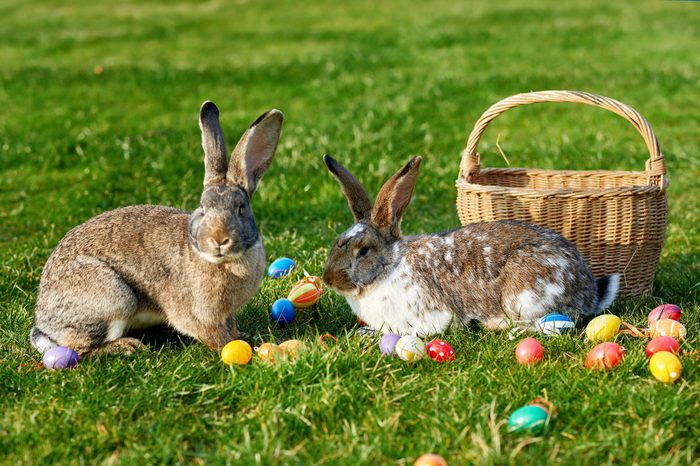
Getting a delivery from the Easter bunny
Easter is named after Eostre, the pagan goddess that symbolized fertility. Bunnies are well known for their fertility, so the rabbit became associated with the goddess and thereby the holiday. The traditional festival to celebrate Eostre typically occurred in the spring, and that’s also when rabbits typically breed. The cartoon version of the Easter bunny, which delivers chocolate and candy-filled Easter baskets to kids, is a fairly modern invention, popularized by marketing campaigns in the 20th century.
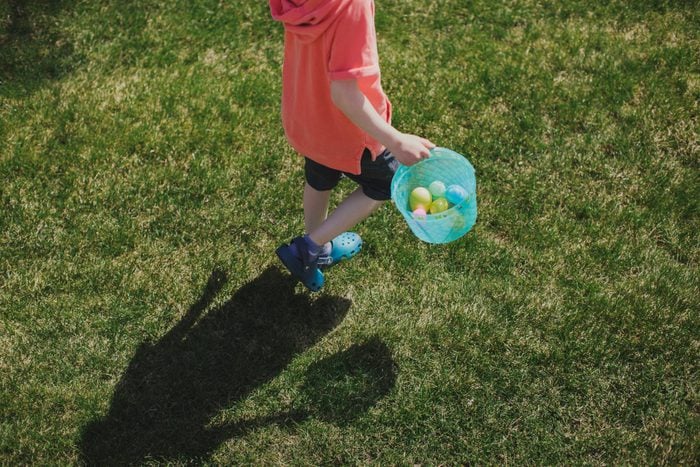
Taking part in Easter egg hunts
Of all the Easter traditions, nothing quite beats an Easter egg hunt—for children or adults. Grown-ups hide the eggs, and kids gleefully search for them. The tradition started with Martin Luther, the 15th-century theologian. The joy of the hunt was meant to symbolize the joy that Mary and Martha felt upon finding Christ’s tomb empty after he was resurrected. These days, the eggs are more likely to be made of hollow plastic and filled with Easter candy or toys—a much more fun surprise than a hard-boiled egg that’s been sitting out in the sun too long.
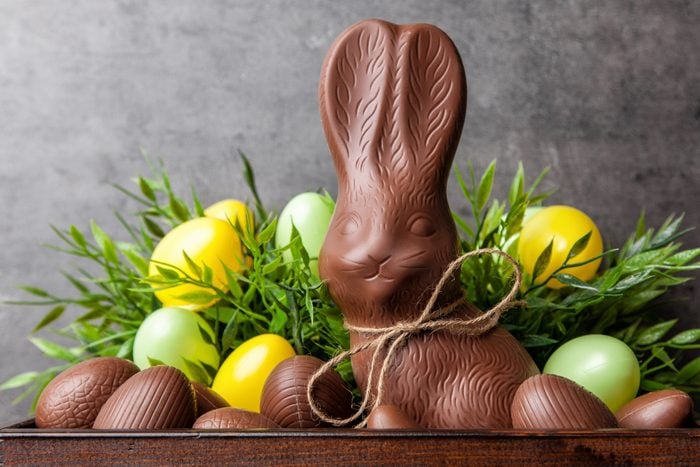
Eating hollow chocolate bunnies
Love them or hate them, hollow chocolate bunnies will most likely be part of your Easter. (They make great Easter basket stuffers, after all.) Considering the underwhelming amount of chocolate they provide (compared with their solid counterparts), chowing down on hollow bunnies may seem like one of the more bizarre Easter traditions. But there’s a reason behind the candy’s popularity.
In 1939, chocolate manufacturers wanted a way to make chocolate bunnies that could be large and decorative while still easy to eat. You’ll have no problem biting into a thin, hollow chocolate bunny, but bigger chunks of solid chocolate can be tough on your chompers. And let’s be honest: Making hollow bunnies was also a way for manufacturers to sell larger products at a cheaper price.
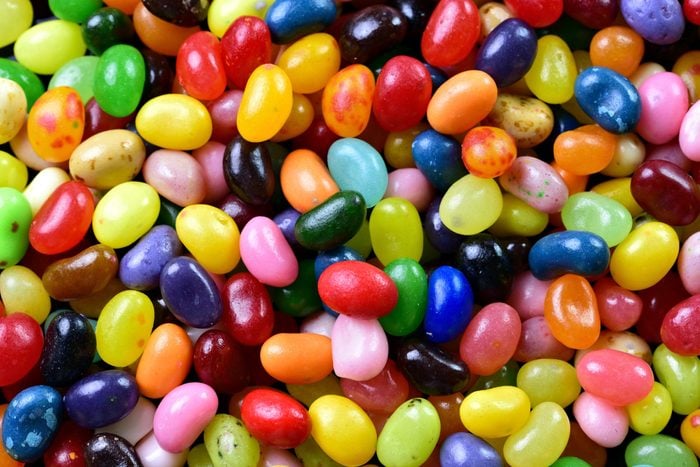
Snacking on jelly beans
Perhaps the best-known candy among Easter traditions—and the most popular after chocolate—is the small jelly bean. The candies come in every flavor and color imaginable. In fact, their versatility (and deliciousness!) is what made eating them a beloved Easter tradition. Jelly beans originally started as a Christmas candy and don’t have a specific Easter-themed meaning, but they’ve become a popular choice for filling plastic Easter eggs before the big hunt. Running low? Grab a couple of bags before guests arrive; these stores are open on Easter Sunday.
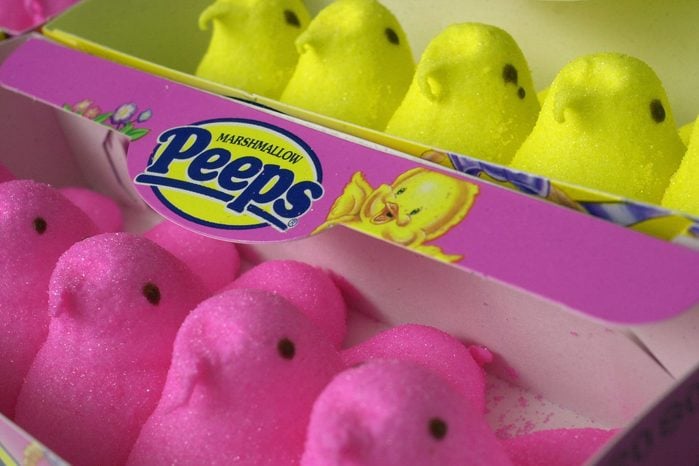
Buying candy Peeps
These brightly colored, sugar-coated, chick-shaped marshmallows were invented in 1953 and quickly became a staple in Easter baskets. Now they come in dozens of different shapes and colors for nearly every holiday. Here’s a fun fact: It takes just six minutes to make a batch of Peeps. Talk about fast food.
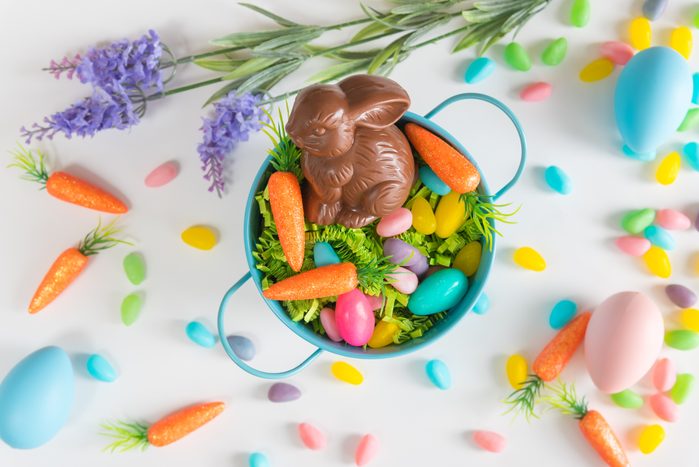
Gifting Easter baskets
One of the most popular Easter traditions, filling a basket with eggs, comes from Germany and was inspired by the concepts of fertility and springtime. Children would make “nests” filled with grass in hopes that Peter Cottontail would fill the nest with eggs and other treats. The nests gradually evolved into baskets, which were less messy, easier to carry and, of course, bigger—like these pre-made Easter baskets.
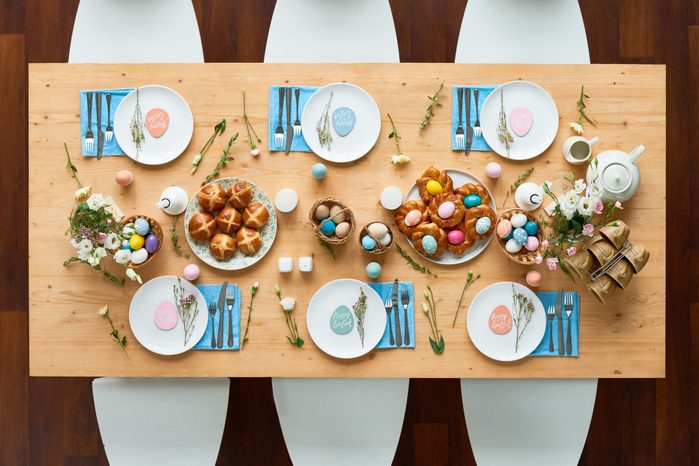
Eating an Easter feast
Many Christians observe Lent, a 40-day period during which they vow to abstain from something—sugar, alcohol, meat or pretty much any other vice—as a type of purification in preparation for Easter. It symbolizes the 40 days Jesus spent fasting in the desert and culminates in a giant Easter feast, usually with family.
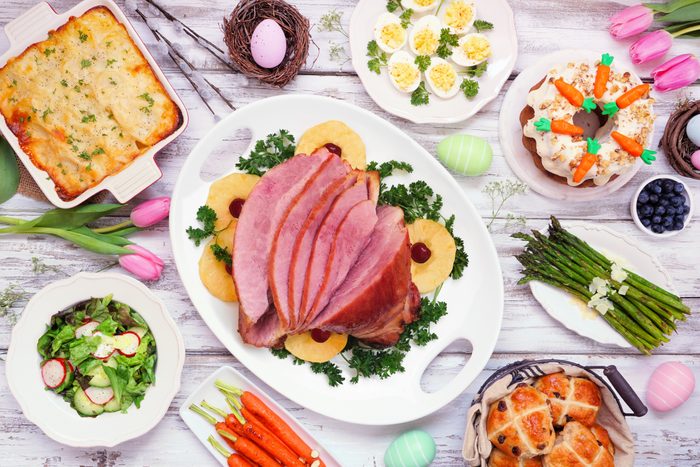
Baking an Easter lamb or ham
Most traditional Easter dinners feature meat, and 67% of Americans serve ham, a symbol of good luck in many cultures. In terms of religious Easter traditions, lamb is the favorite. Jews use a lamb as a symbol of the promised Messiah, and Christians call Jesus the “Lamb of God.” So it’s not uncommon to see a rack of lamb in the center of the feast. Cook up either for this year’s Easter feast, or branch out with one of these delicious, nontraditional Easter dinner ideas. Not feeling the cooking this year? No worries. These restaurants are open on Easter.
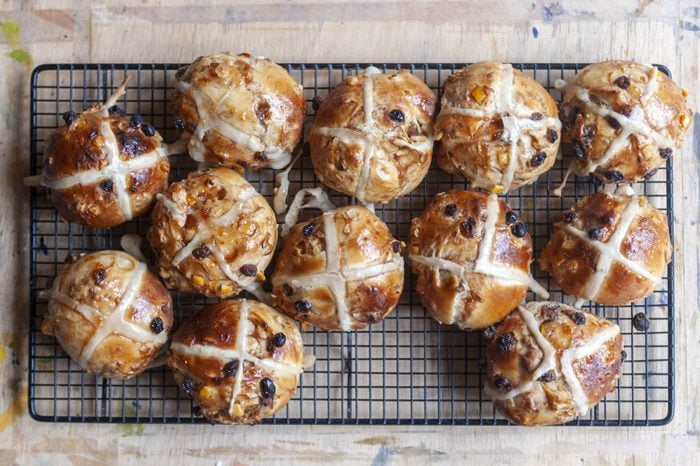
Baking hot cross buns
Hot cross buns and other breads marked with the symbol of a cross aren’t just Easter traditions; they’re often eaten on Good Friday too. Different sweet breads are eaten all over the world on Easter Day, including choreg (Armenia), paska (Ukraine), babka (Poland), tsoureki (Greece) and Italian Easter Bread. These are conspicuously risen breads, which may also show a desire for Easter traditions to be different from Passover, which includes unleavened bread.
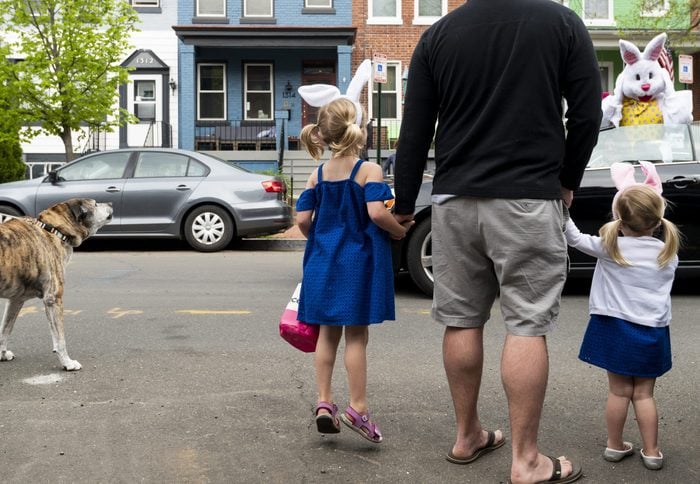
Watching Easter parades
The first Easter parades may have started at churches, but they were really about fashion. Beginning in the early 1800s, wealthy Christians in New York City would put on their finest clothing to attend Easter services and then take a long walk home in order to show off their fancy spring suits and dresses. The poorer folk would line up to watch. The tradition has been kept alive through Easter parades, but these are more about fun and celebration than fashion. If you’re not into the parade thing, you can celebrate with a different form of entertainment: Stream Easter movies on Netflix and watch Easter movies with the kids.
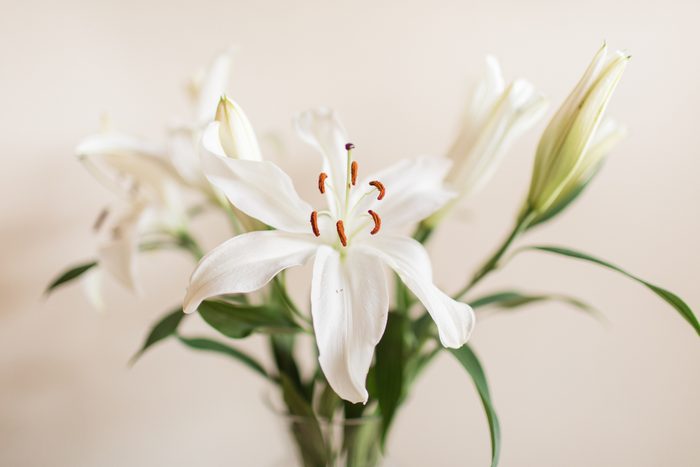
Decorating with Easter lilies
These elegant, trumpet-shaped flowers have become so associated with the holiday that they’ve been named Easter lilies. The white symbolizes purity, and the shape reminds worshippers of the trumpets that will announce Christ’s Second Coming. You can buy fresh-cut stems as holiday decor, or order some lily nail wraps and wear Easter nails instead.
Sources:
- History.com: “Easter Symbols and Traditions”
- History.com: “Easter 2023”
- Smithsonian Magazine: “Why Are Chocolate Easter Bunnies hollow?”
- Britannica: “Easter”
- Farmer’s Almanac: “When is Easter 2023?”
- CT Post: “What would Easter be without ham?”
